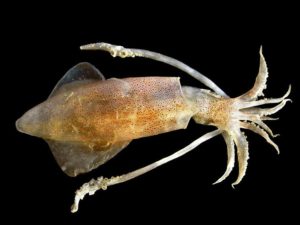
U.S. Army Operational Camouflage Pattern uniforms could benefit from a new study about cephalopods. A research team led by Leila Deravi at Northeastern University has set out to discover how the stealth capabilities of cephalopods could help protect soldiers.
Cephalopods are tentacled mollusks including squid, octopi, cuttlefish and the nautilus. These species can change their color and skin texture, effectively rendering them invisible to predators.
A recent article in New Atlas says that cephalopod camouflage employs tiny muscular organs called chromatophores, which contain hundreds of thousands of pigment granules 150 times smaller than the width of a human hair. The organs incorporate a folding membrane that helps manage what is hidden and what is revealed, in a fraction of a second, giving the sea creatures control over their color and iridescence. Chromatophores yield shades of red, yellow, orange and brown. Under the color layer is a layer of iridophores that reflect light, like a mirror. The combination of properties allows advanced cephalopods, such as cuttlefish, to reflect the full spectrum of visible light.
Deravi’s team, in cooperation with the U.S. Army Natick Soldier Research, Development and Engineering Center, examined and isolated the pigment granules, then layered and reorganized them to create a broad pallet of colors. The team used the granules to make color-rich, ultrathin films and spools of fibers. When the fibers were backed by a mirror layer, the scattering of light enhanced the color.
According to the report, the pigment granules offer the promise of creating wearable, flexible screens and textiles that are capable of adaptive coloration. One day, battle fatigues may give soldiers the same control cuttlefish have to meld with their surroundings.
The research was published in Advanced Optical Materials.
 TEXTILES.ORG
TEXTILES.ORG


